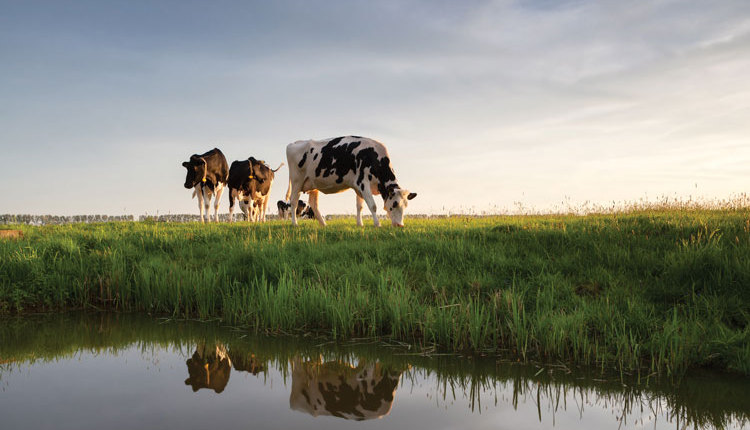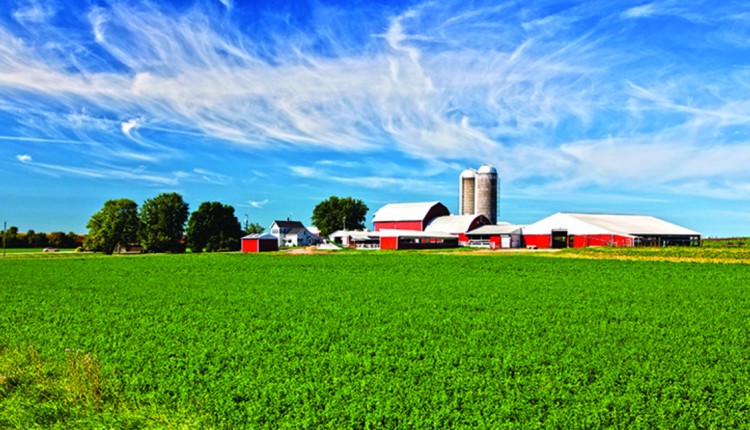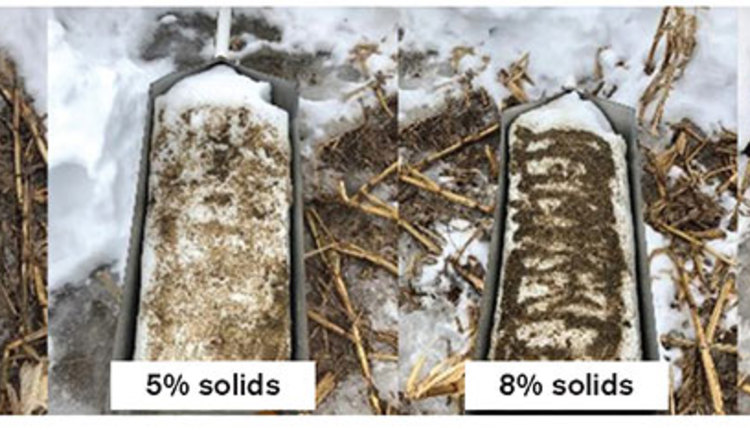Tillage and manure application are critical nutrient management aspects affecting crop yield potential, soil erosion, and nutrient loss risk. Besides raising erosion potential, tillage over time also influences soil organic carbon accumulation or loss, soil structure, compaction potential, and overall soil quality.
Mitigating soil erosion makes economic and environmental sense because long-term erosion reduces crop yield potential and can contribute to impaired water quality when sediment and nutrients in runoff are transported to surface water. It is well established that reducing tillage decreases erosion, particularly on moderate to steeply sloping fields with high erodibility.
In corn silage systems, tillage practices depend on climate, soil characteristics (texture, drainage, and slope), and other farm-specific factors. Individual farm tillage practices may also vary by specific fields/soil types, and over time depending on weather, crop rotations, and compaction.
In cold climates with poorly drained soils, tillage helps dry surface soils, break up clods, relieve surface compaction, and prepare a consistent seed bed. While reduced tillage is possible on imperfectly drained soils, strict no-tillage is more common on well-drained soils where aeration is not typically limiting.
Preparing for application
Tillage sets the stage for manure management. In conventional systems, manure is typically broadcast on the surface and incorporated via a primary tillage tool, such as a chisel plow, or secondary tillage tool, like a disk, harrow, or field cultivator.
While effective at reducing ammonia volatilization and surface runoff nutrient loss, tillage incorporation has higher erosion potential compared to lower disturbance application methods. In addition, some studies suggest that long-term reduced tillage should further cut back erosion/surface runoff due to greater water infiltration rates from repeated lack of tillage.
Low disturbance manure application (LDMA) attempts to achieve the conservation and soil quality benefits of reduced tillage (lower erosion and soil disturbance) while conserving ammonia nitrogen and mitigating runoff nutrient loss potential in the way conventional tillage does. LDMA equipment is engineered to minimize horizontal soil shearing and disturbance, leave more crop residue on the surface, and place manure beneath the soil surface or encourage infiltration to enhance manure-soil interaction.
LDMA has focused mainly on applying liquid manures. Commonly used LDMA implements include applying manure in bands (banding) with or without aeration (banding/aeration), sweep injection, shallow disk injection, and various drag hose systems.
By definition, broadcast-surface application is low disturbance as it causes minimal disturbance during application; however, ammonia-nitrogen is rapidly lost without incorporation, and nitrogen (N), phosphorus (P), and other nutrients remain shallow and vulnerable to transport in surface water runoff.
For corn or hayfields
LDMA can work in both corn and hay crop rotation phases. Previous research led by the USDA Agricultural Research Service (ARS) compared surface runoff water quality from corn-winter rye plots under the following treatments:
- No manure (control)
- Broadcast-surface application
- Broadcast-disk incorporation
- Banding/aeration
- Sweep injection with strip till
Results showed that strip till injection had 84% to 99% lower P losses compared to broadcast soon after fall manure application. Aeration/banding also reduced ammonium and dissolved P, but it was not as effective as strip till injection for total P and N, similar to the broadcast-disk treatment. Average runoff total P, dissolved reactive P, and ammonium-N concentrations did not differ statistically between strip till injection and the no-manure control, suggesting injection mitigated surface water quality risk more than the other methods for runoff events soon after manure application.
Another important aspect highlighted by this study was runoff timing relative to manure application. In the two spring runoff events, total N and P concentrations dropped substantially compared to fall, with few significant differences between methods. Timing and method also affect the amount and distribution of soil nutrients and crop yield potential. While yield was not part of this study, a separate four-year ARS trial showed that fall-applied manure via strip till injection produced similar corn silage yields to spring-applied fertilizer N, indicating injection conserved more N compared to other application methods.
A main concern with LDMA in hay crops is plant damage and yield loss. Encouragingly, studies in the U.S. and other countries report relatively low risk of stand injury under low application rates and done under proper conditions. In mixed alfalfa-grass plots in central Wisconsin, recent work led by ARS indicated that runoff total N and P for shallow disk injection was significantly lower than the aerator/band treatment and similar to the no-manure treatment.
Like broadcasting manure, LDMA after hay harvest is ideal before any regrowth occurs. Soil moisture status is an important factor to consider anytime manure is applied, and especially for LDMA. Studies indicate that banding/aeration on wet soils is ineffective and could even exacerbate runoff potential by causing compaction and reducing infiltration.
Applying liquid dairy manure after hay cuttings is a common practice and provides an important source of N, P, sulfur, potassium, and other nutrients. However, without immediate injection or incorporation, greater than 80% of manure ammonia-N can be lost within 24 hours of application, reducing the agronomic value. While N loss from lack of incorporation may not be as much of a concern for more leguminous stands, nutrient loss risk is still worrisome since broadcast manure (liquid or semi-solid) is more vulnerable to runoff.
Another consideration is P accumulation from repeated manure applications and lack of tillage to redistribute P. Depending on soil test P levels and runoff risk, P accumulation from LDMA may or may not be an issue.
Keep nutrients in place
The bottom line is that LDMA offers several agri-environmental advantages over broadcasting and/or broadcast-till. Broadcasting without incorporation may seem faster and cheaper, but it may not be more cost effective when factoring in lost N. It is also a high water quality risk compared to incorporation. LDMA mitigates tillage-related erosion and leaves more residue compared to conventional tillage.
Evaluating the suitability of LDMA must consider N savings and the lower environmental risk in addition to greater time, labor, and equipment needs. Future work should consider both economic and environmental aspects of LDMA to help farms determine their most efficient manure management strategies.
This article appeared in the May 2020 issue of Journal of Nutrient Management on pages 10 and 11.
Not a subscriber? Click to get the print magazine.









